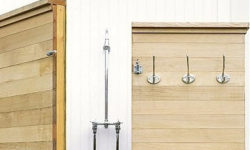Does your bathroom combine a bathtub and a shower, all in one? If so, you need a good shower diverter. to make it work right. The shower diverter valve is a simple device responsible for rerouting the water back and forth between the showerhead and tub faucet. However, even the simplest valves break and require replacement over time.
Shower Diverter Mechanisms
The bathroom pipes both deliver and dispose of the water. One of those pipes connects to your showerhead and tub faucet. The diverter works like a switch, allowing you to control the water flow between the shower and the tub. When your shower diverter valve is open, the water flows
directly through the faucet into the tub. When closed, it creates pressure and water is forced upward to the shower. This happens when you turn on the lever or knob of the shower.

Benefits of Shower Diverter Valves
They allow us to combine the bathtub with the shower, which is their main benefit. This solution is good if your bathroom has limited floor space. but you still want to have a tub in there. However, you can also meet shower diverter valves in tropical showers. I have it in my small apartment. It switches water between the handheld and the fixed showerhead at the top.
Types of Shower Diverters
The main types of diverters that you can find on the market today are 3 o 2-valve or T (single) diverters.
3-Valve Diverter
Usually, it is placed between the taps of a two-tap faucet. The valve works both ways: clockwise and counterclockwise 180 degrees. Before switching to the shower mode, you need to adjust the water temperature with the cold and hot taps. Then, turning the lever clockwise sends the water to the shower. When you need to turn it back to the tub, it must be turned counterclockwise.

2-Valve Diverter
It consists of two L-shaped valves, with water pushed vertically (upwards) to the showerhead. Similar to the 3-valve diverter, it is located in the midpoint of the faucet and has a small lever on it. The lever switches the water direction from the tub to the shower and vice versa. The temperature is adjusted by the hot/cold taps or another (larger) lever, depending on the model of the faucet.

T (Single) Diverter
Plumbers call it a "T" diverter because its shape reminds the letter T.
It is the most common type of diverter., usually integrated into the tub spout and operated with a handle that pulls straight up. When pushed down the water flows to the tub. Pulling the handle up redirects the water flow to the showerhead.

Turning Off the Water in the Shower
All three valve types equally direct the water through the showerhead until the valve is released. The manufacturers recommend releasing the diverter to allow any remaining water to flow to the tub spout, at least for a few seconds, before turning off the water. This is a preventive measure to reduce strain on the diverter valves.
Typical Diverter Valve Problems
Troubleshooting a broken shower switch is pretty straightforward. The most common issue is when the water flows simultaneously from the bathtub faucet and the showerhead. This is a sign of the valve wear. or a clog with deposits over time. In this case, it has to be replaced.
How to Replace a Shower Diverter Valve
- The first step is to confirm if there is a problem with the diverter valve. If that's the case, turn the water supply off. Then seal off the drain with tape to prevent any small parts or screws from accidentally falling there. Identify the type of diverter installed in your shower.
- Try to clean the shower diverter to restore its optimal condition before considering a replacement. Tighten any loose screws behind the diverter valve's faceplate and check for leaks in both directions. If the issue persists, move to step 3
- Remove the old shower switch and disassemble it. If the valve rotates, loosen the stem nut and remove the entire valve. For slide valves, unscrew the threaded spout of the tub.
- Buy a new shower diverter. Use a wrench to securely tighten the valve, but don't over-tighten it! Verify the valve's correct position.
- Finally, do a test run. Turn the water back on and activate the diverter. The water should now flow to the showerhead. If it works as expected without leaks from the tub spout, you've done it right!
Too confusing? Here’s a guide for video format fans.
 (0)Dislikes
(0)Dislikes (0)
(0)










